Morocco, is a North African contry, is celebrated for its diverse landscapes, rich history, and vibrant culture. Recognized as one of the top tourist destinations in 2017 by the World Tourism Organization, Morocco seamlessly blends modern cities, natural wonders, and historical monuments in Morocco that highlight its rich heritage. From bustling medinas to tranquil desert landscapes, the Kingdom’s allure lies in its remarkable variety.
Visitors can embark on exciting adventures, such as a 3-day trip from Marrakech to Merzouga desert, a 4-day tour from Marrakech to Fes, or extended trips lasting up to 10 days from Casablanca. beyond these adventures, Morocco is also home to numerous historical monuments that reflect its storied past.
In this article, we’ll delve into the most famous historical landmarks in Morocco, with a focusing on the vibrant cities of Marrakech, Casablanca, and Fes.
Historical Monuments in Marrakech
Marrakech, known as the “Red City” and the “Pearl of the South,” is a fascinating destination in Morocco. Founded in 1062, it has served as an imperial capital and a cultural and commercial hub. The city lies at the crossroads of the Sahara Desert and the Atlas Mountains, offering visitors a unique blend of history and natural beauty.
Bahia Palace
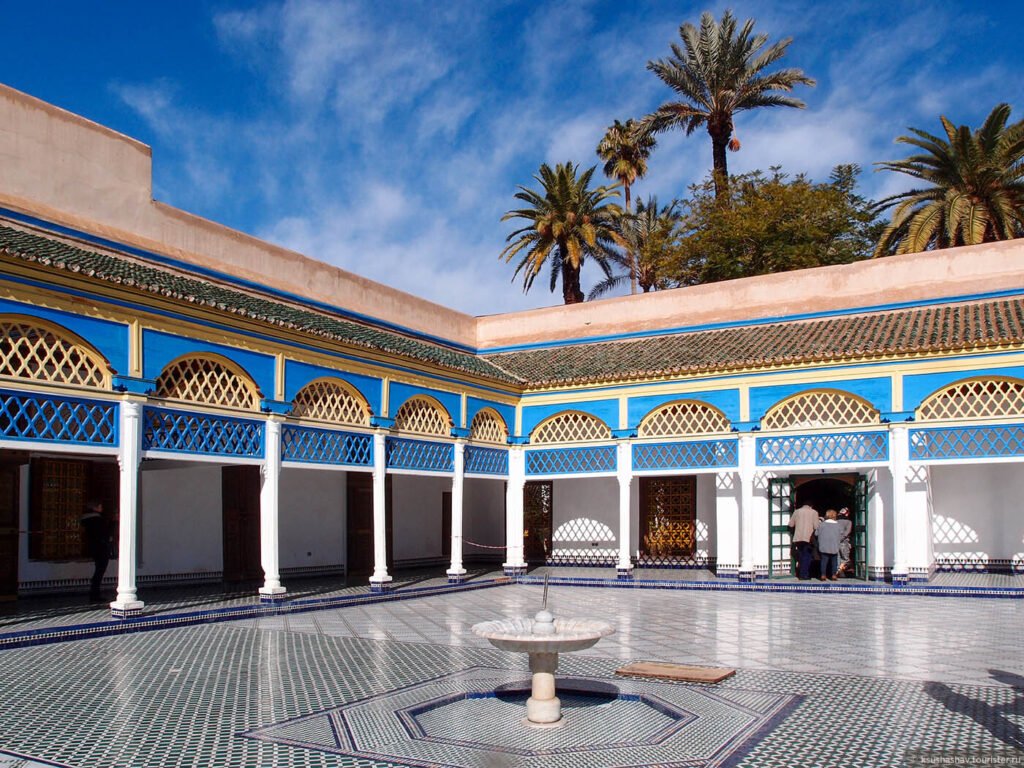
The Bahia Palace is a stunning example of Moroccan architecture. Built in the late 19th century during the reign of Sultan Abdul Aziz, the palace was commissioned by Ahmed bin Musa, a vizier known as “Ba Hammad.” Although Ahmed passed away before its completion, the palace stands as a testament to his vision.
With its intricately decorated rooms, tranquil courtyards, and beautiful gardens, the Bahia Palace offers visitors a glimpse into the opulence of Moroccan royal life. It remains one of Marrakech’s most famous historical landmarks.
Koutoubia Mosque
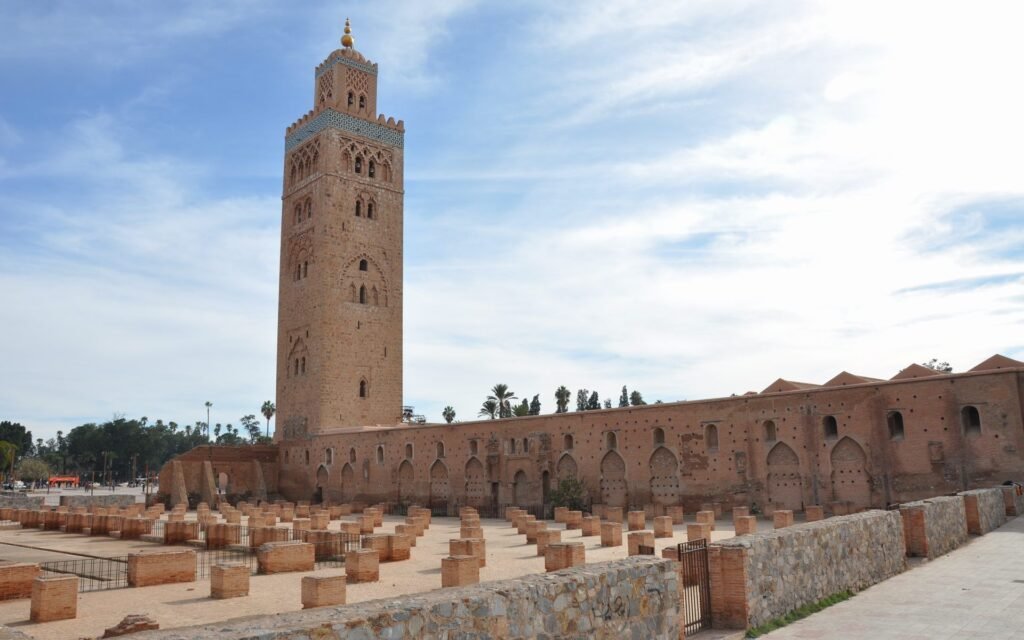
The Koutoubia Mosque, built in 1150, is Marrakech’s largest mosque and one of its most iconic landmarks. Its name originates from the Arabic word “Ketbiyen,” which refers to the booksellers who once operated near the mosque. The mosque’s 65-meter-high minaret, adorned with turquoise tiles and intricate carvings, is a symbol of Islamic art and engineering.
The Koutoubia Mosque spans over 5,300 square meters and includes 17 naves and 11 domes. Its prayer hall, equipped with a masterpiece pulpit made in Córdoba, Spain, showcases the intricate craftsmanship of Islamic carpentry. The mosque remains a significant religious and cultural center in Marrakech.
Jemaa El Fna Square
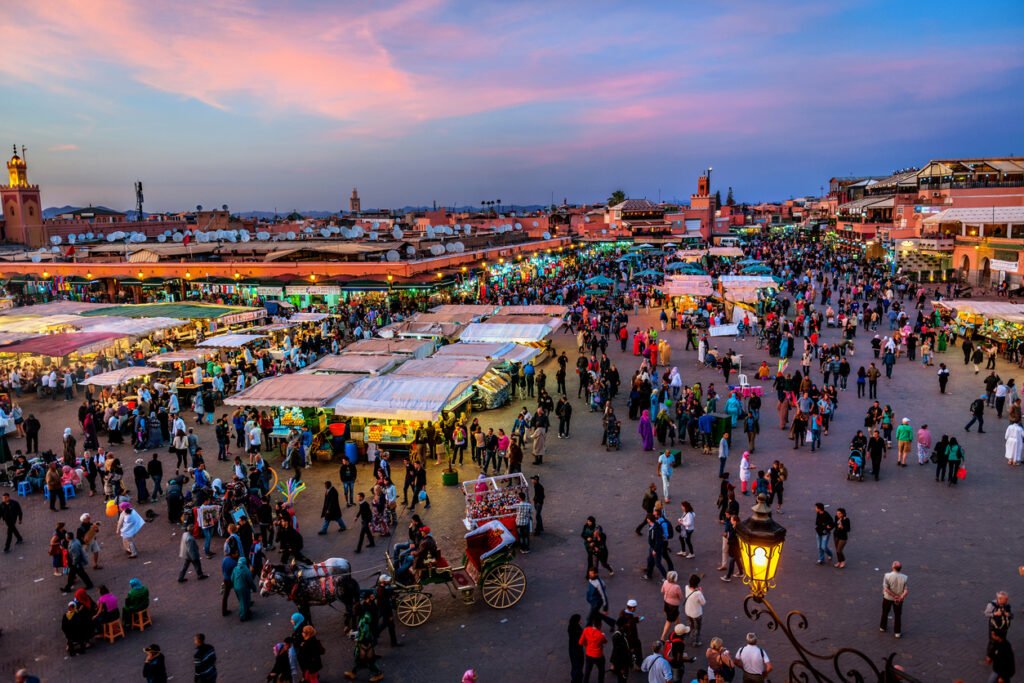
Located in the heart of Marrakech, Jamaa El Fna Square is a vibrant cultural space and a UNESCO-listed intangible cultural heritage site. The square is alive with activity, featuring snake charmers, musicians, storytellers, and food vendors. It’s a must-visit destination for anyone looking to experience the lively spirit of Moroccan culture.
Menara Garden
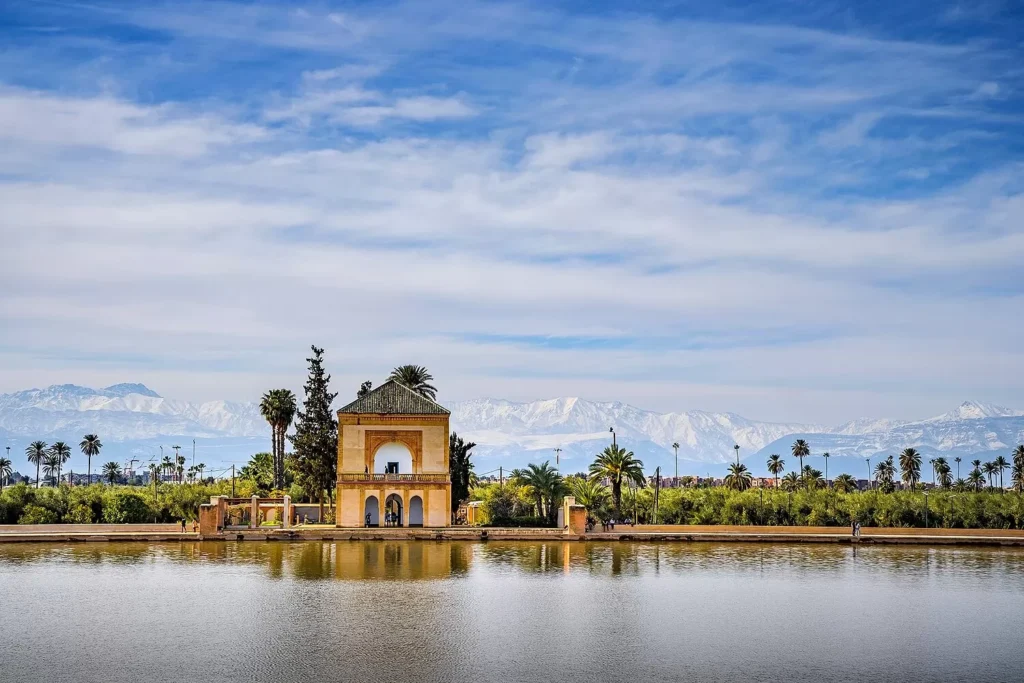
Located a short distance from the city center, Menara Garden is a tranquil retreat surrounded by olive trees. Built in the 12th century, the garden features a large pond used for irrigation. It’s an ideal place to relax and enjoy the serenity away from the city’s hustle and bustle.
Saadian Tombs
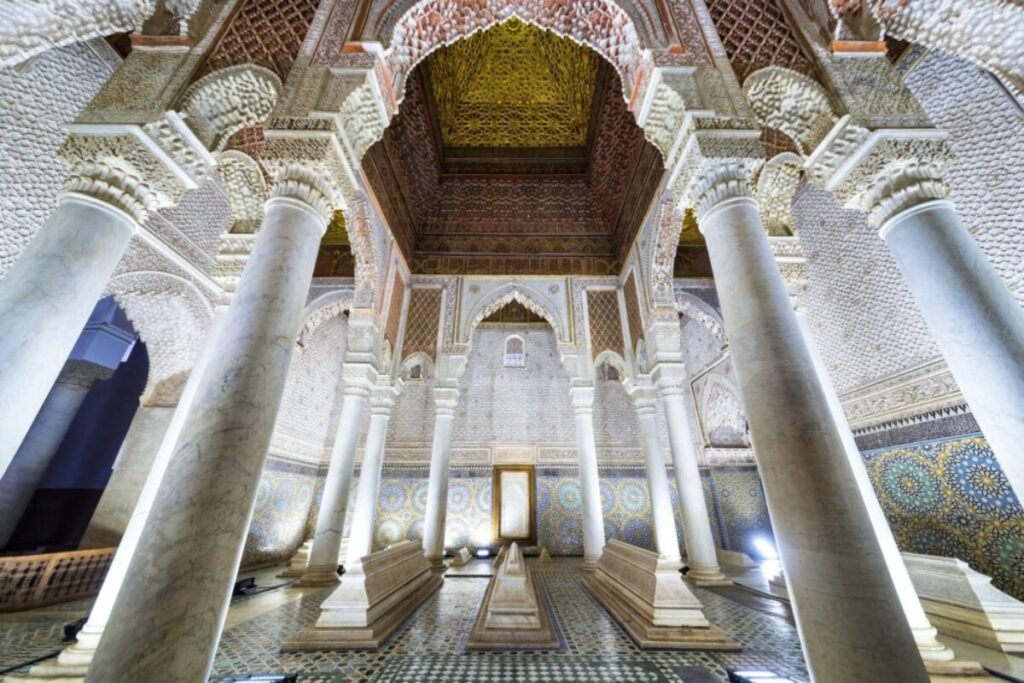
The Saadian Tombs, dating back to the late 16th century, were built during the reign of Sultan Ahmad al-Mansur. Hidden for centuries and rediscovered in 1917, the tombs feature exquisite decorations, including carved cedarwood and colorful zellij tiles. They provide a fascinating insight into the Saadian dynasty’s architectural legacy.
Historical Monuments in Casablanca
Casablanca, Morocco’s largest city and commercial capital, is a vibrant metropolis with a rich history. It began as a Berber settlement, later became a Portuguese stronghold, and eventually developed into a modern city with French colonial influence.
Hassan II Mosque
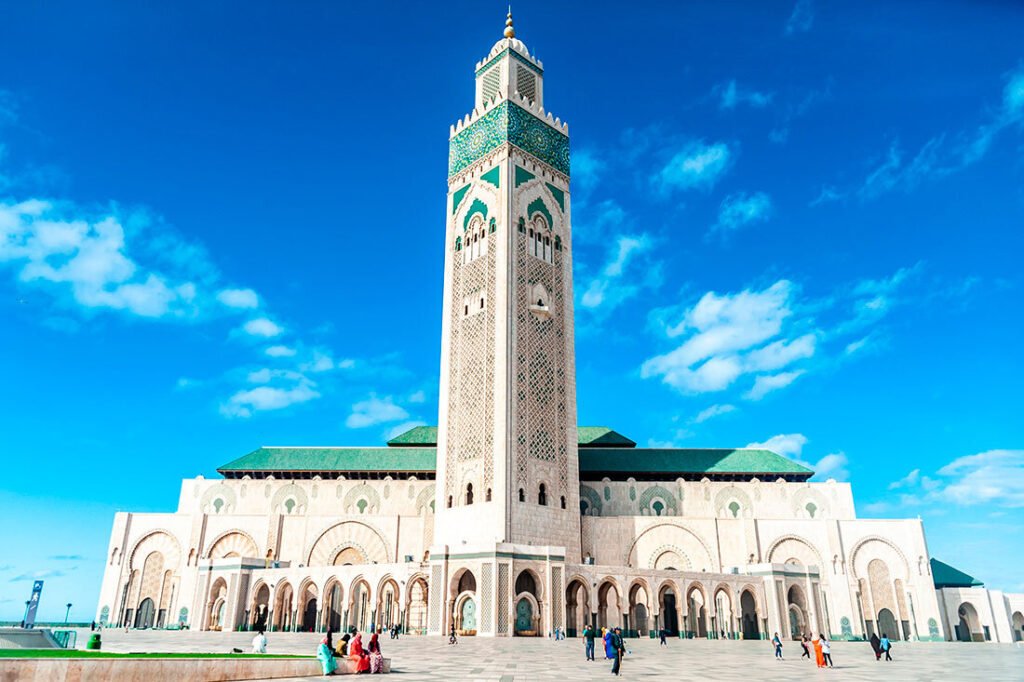
The Hassan II Mosque, perched on Casablanca’s coastline, is one of Morocco’s most remarkable landmarks. Built between 1987 and 1993, it is the largest mosque in the country and the second-largest in Africa.
The mosque’s minaret, standing at 210 meters, is the tallest in the world. Its design incorporates traditional Moroccan craftsmanship, including carved cedarwood, colorful zellij tiles, and marble detailing. The mosque also features modern elements like a retractable roof and laser beams pointing toward Mecca.
With a prayer hall that accommodates 25,000 worshippers and an outdoor space for 80,000 more, the Hassan II Mosque is an architectural marvel and a symbol of Morocco’s religious and cultural heritage.
Medina
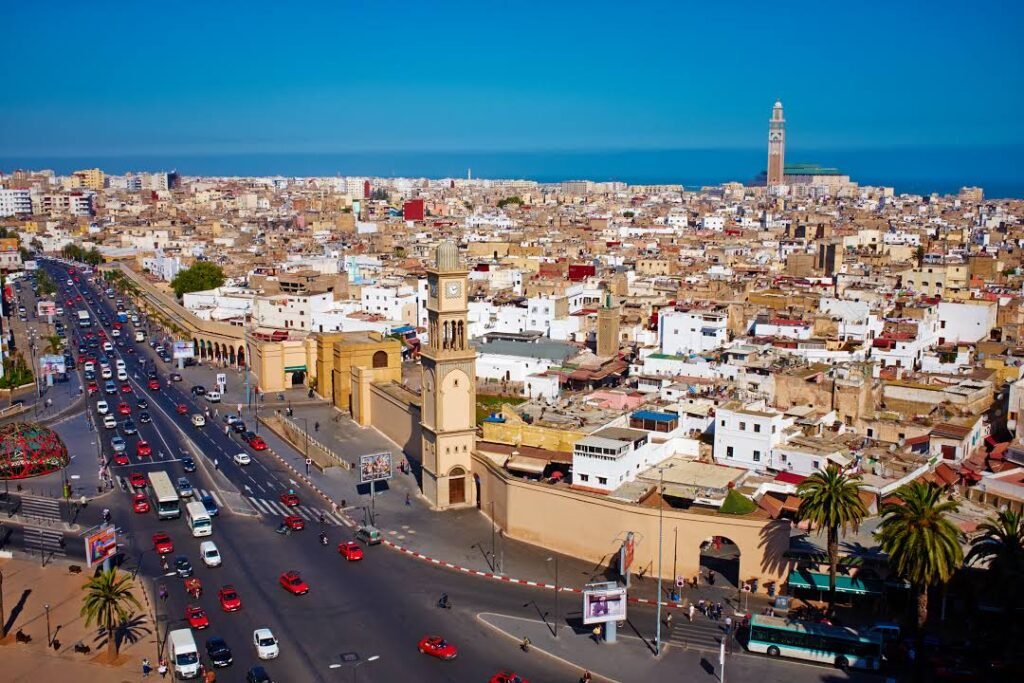
Casablanca’s Medina may be smaller than those in Marrakech and Fes, but it still offers a charming glimpse into Morocco’s past. Visitors can wander through narrow streets lined with traditional shops and discover hidden gems, including local crafts and delicious street food.
Art Deco Architecture
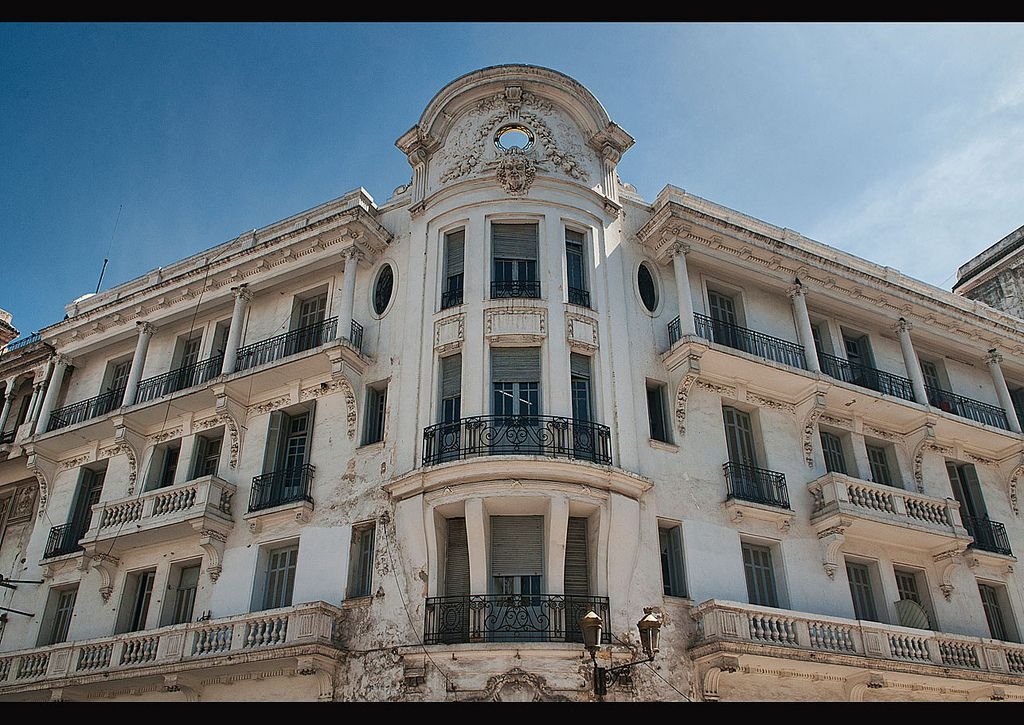
Casablanca’s downtown area showcases an impressive collection of Art Deco architecture, influenced by the French colonial period. Buildings with geometric patterns, rounded corners, and elegant facades reflect the city’s unique blend of modernity and tradition. A stroll through this area is a treat for architecture enthusiasts.
The Habous Quarter
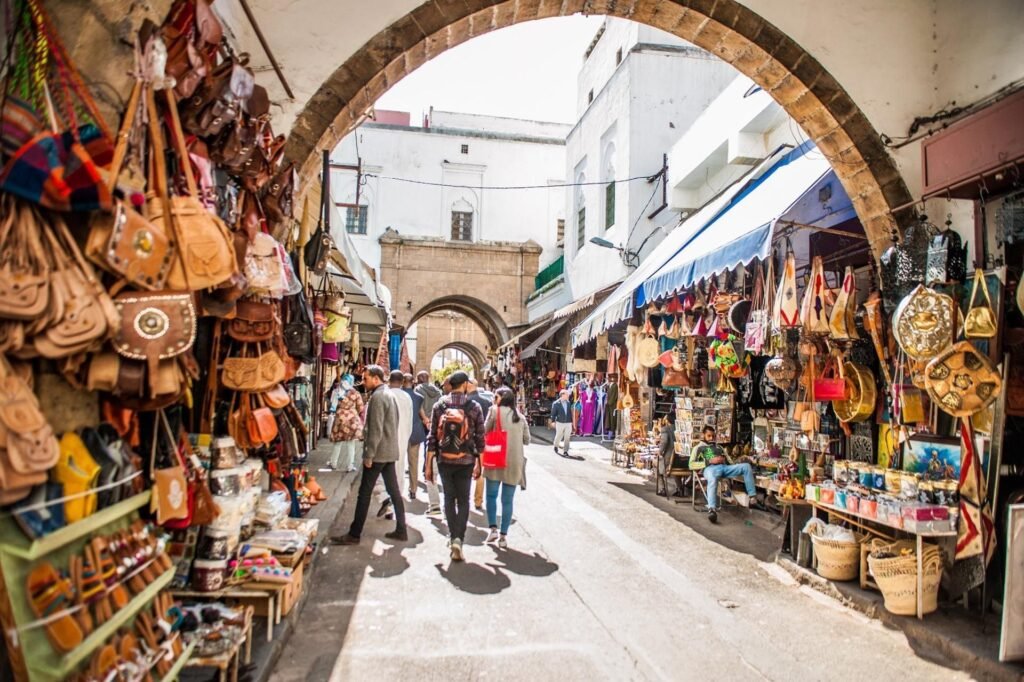
Also known as the “New Medina,” the Habous Quarter was built by the French in the 20th century. Its carefully planned layout combines traditional Moroccan architecture with modern urban design. The area is home to artisan shops, bakeries, and historical landmarks, offering a quieter alternative to the bustling Old Medina.
Historical Monuments in Fes
Fes is often called Morocco’s cultural and spiritual capital. It is the country’s oldest imperial city and a treasure trove of history. Its ancient medina, Fes el Bali, is a UNESCO World Heritage site filled with historical wonders.
The Medina of Fes
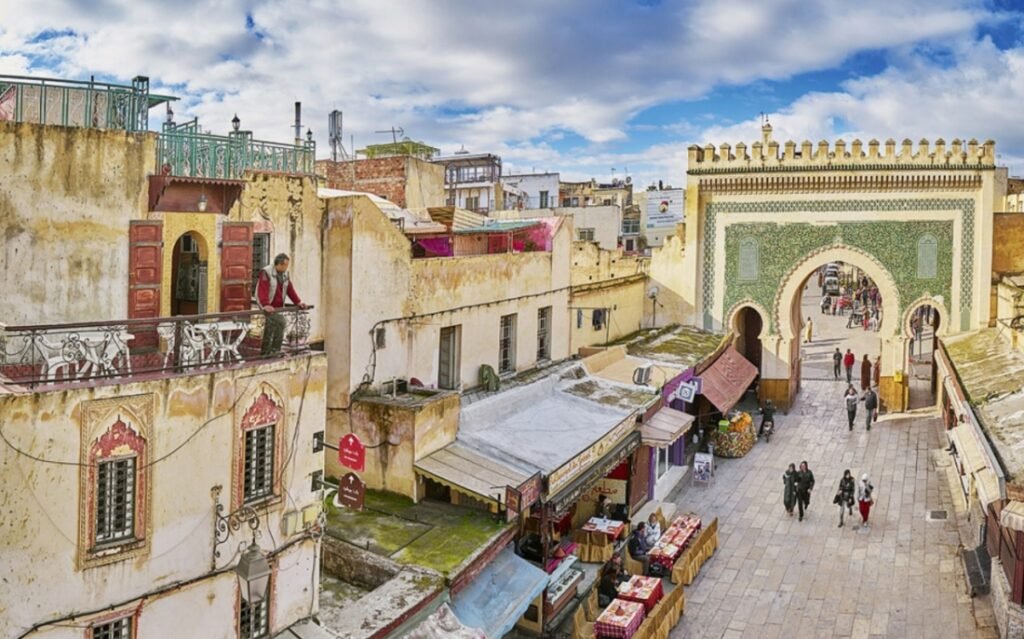
The Medina of Fes, a UNESCO World Heritage Site, is a labyrinth of over 10,000 narrow alleys, bustling souks, and hidden courtyards. It’s a living museum where visitors can experience traditional Moroccan life while exploring historical sites such as the Mellah (Jewish Quarter) and the Kessaria (commercial center).
Al-Qarawiyyin Mosque and University
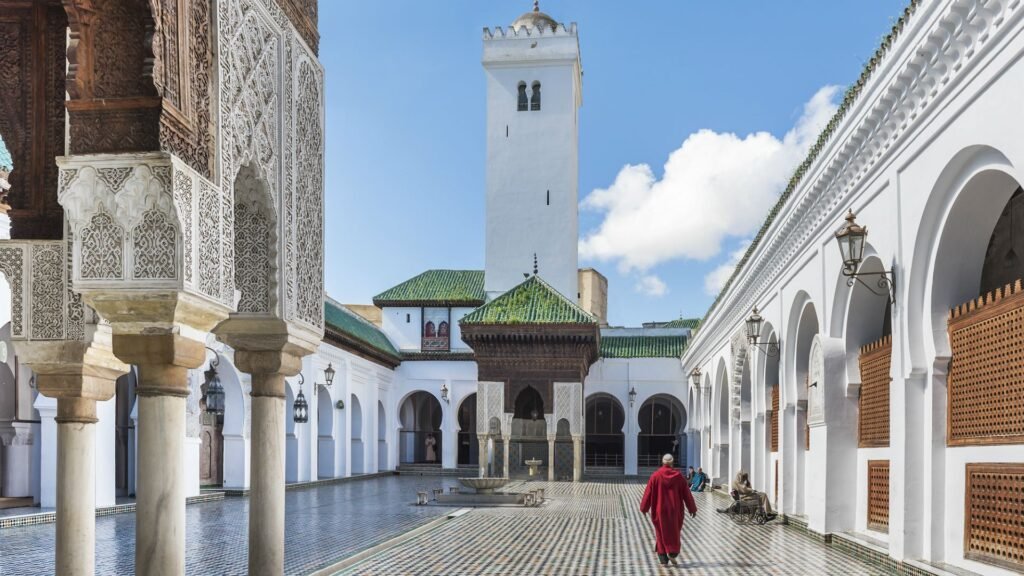
Founded in 859 by Fatima al-Fihri, Al-Qarawiyyin University is recognized as the world’s oldest continuously operating university. It has been a center of learning and religious study for over a millennium.
The adjacent Al-Qarawiyyin Mosque is an architectural masterpiece, expanded over centuries by different rulers. Its serene courtyards, ornate arches, and intricate zellij work make it one of the most iconic historical landmarks in Fes.
Madrasa Bou Inania
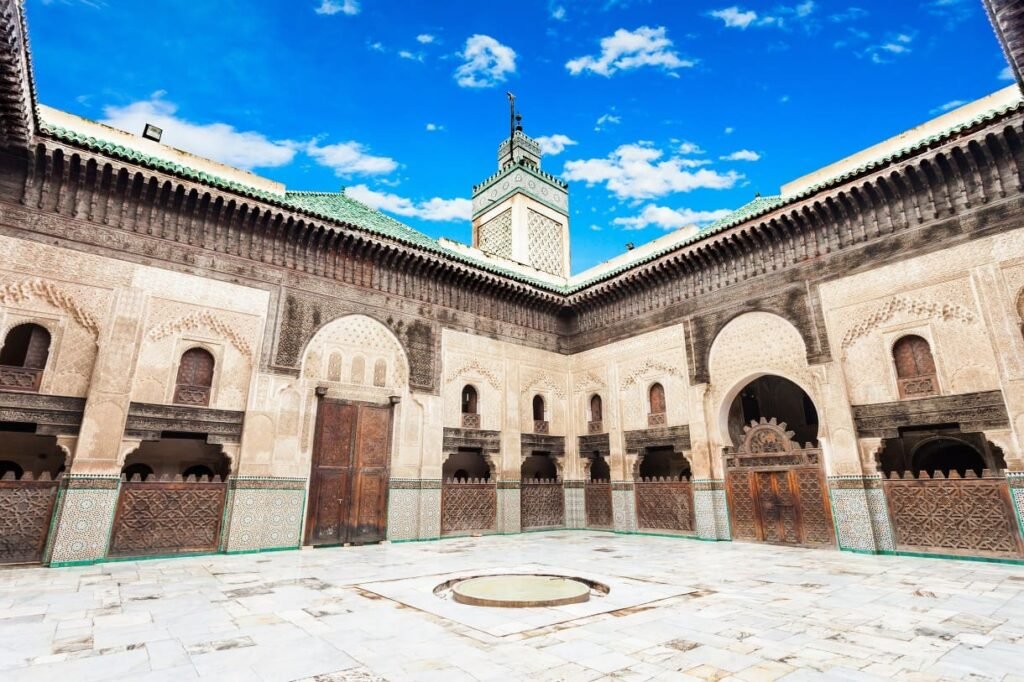
This stunning religious school was built in the 14th century by Sultan Abu Inan Faris. Its detailed wood carvings, zellij tiles, and marble columns make it one of the finest examples of Moroccan architecture.
Batha Museum
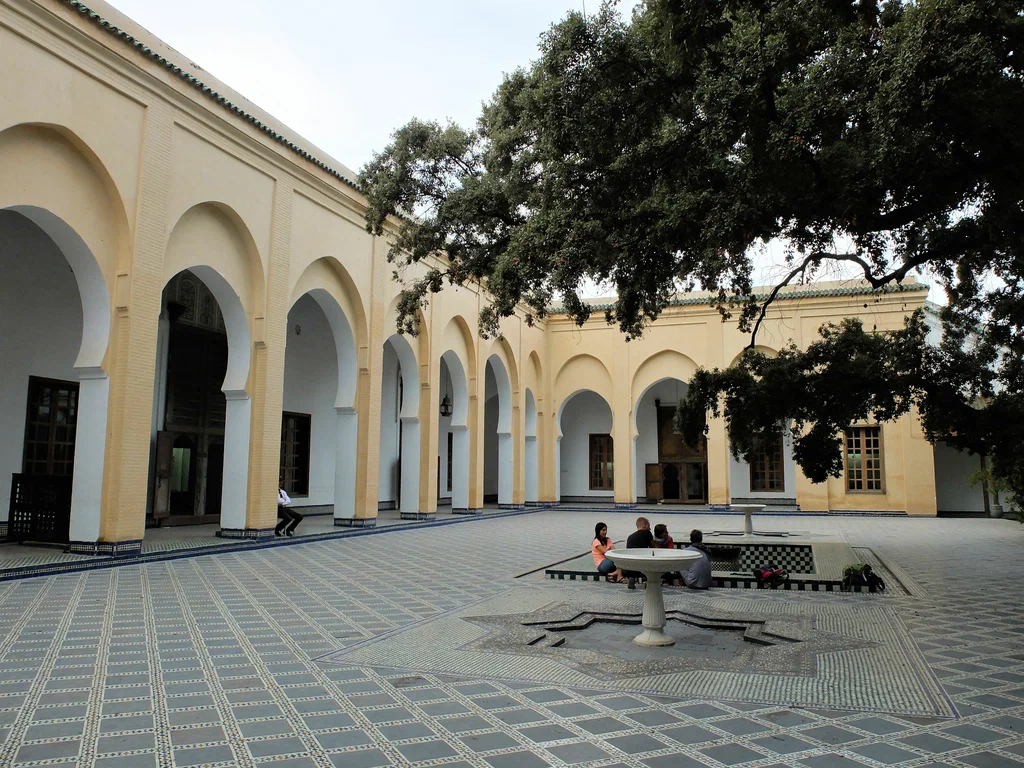
Originally a palace built in the late 19th century, the Batha Museum houses an impressive collection of traditional Moroccan art and artifacts. It’s a great place to learn about the history and culture of Fes.
Why Visit Morocco’s Historical Monuments?
Exploring Morocco’s historical monuments is like stepping back in time. Each site tells a story of the country’s diverse cultural influences, from Islamic and Berber traditions to Andalusian and European elements.
Whether you’re wandering through the vibrant streets of Marrakech, marveling at the grandeur of Casablanca’s Hassan II Mosque, or getting lost in the ancient Medina of Fes, Morocco’s historical landmarks offer unforgettable experiences.
With its rich history, stunning architecture, and welcoming people, Morocco is a destination that leaves a lasting impression on every traveler. Whether you’re planning a short visit or an extended stay, be sure to include these historical treasures in your itinerary.
Plan Your Trip and visit the most historical monuments in Morocco now !
To make the most of your journey, consider planning tours that include these historical landmarks. Popular itineraries include:
- 3-Day Tour from Marrakech to Merzouga Desert
Perfect for those who want to combine history with the natural beauty of the Sahara. - 4-Day Tour from Marrakech to Fes
A scenic route that includes stops at historic sites and breathtaking landscapes. - 10-Day Tour from Casablanca
Ideal for a comprehensive exploration of Morocco’s historical and cultural treasures.

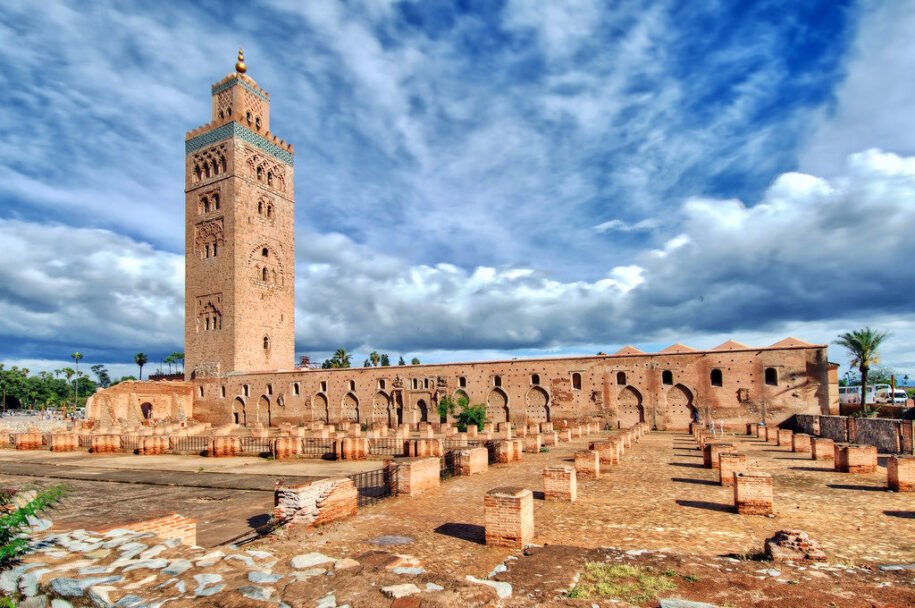
Leave a Reply